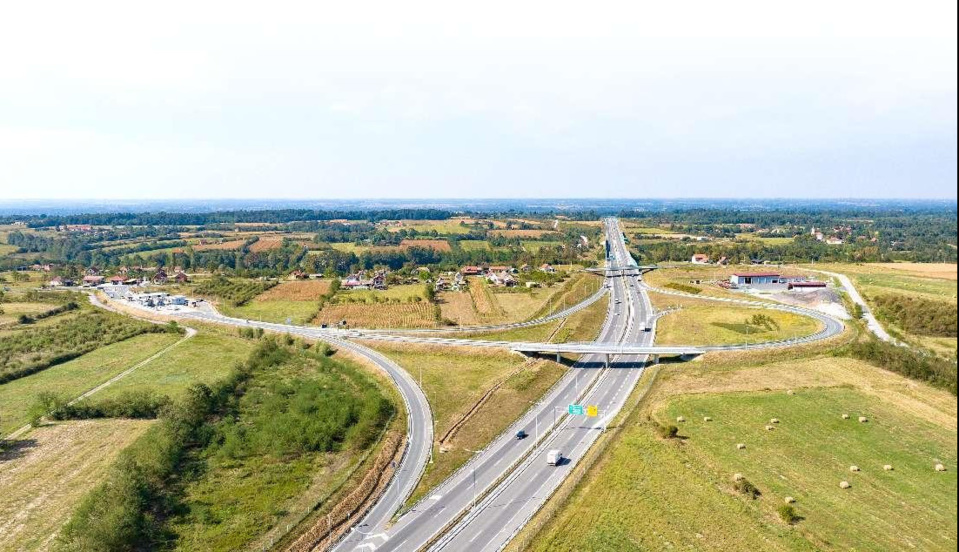Chinese enterprises have taken an active part in important infrastructure projects in Serbia, promoting connectivity between Serbia and its neighboring regions, and contributing to the local economic and social development.
Starting from 7 am, the Belgrade bypass gradually became busy. A continuous stream of large trucks and private cars swiftly moved along the spacious asphalt road. The logo of Power Construction Corporation of China (PowerChina) was clearly shown on the side of the interchange.
For a long time, Belgrade lacked a bypass, and the core route connecting Europe’s north and south, the Pan-European Corridor X, had to pass through downtown Belgrade. This not only caused severe traffic congestion but also brought about problems such as air and noise pollution.
In 2016, during the 5th Summit of China and Central and Eastern European Countries (CEECs), PowerChina signed a contract with the Serbian side for the Belgrade bypass project. The project, with a total length of 20.34 kilometers, includes four tunnels, 22 bridges, and two sets of large overpasses, making it an important branch of the Pan-European Corridor X.
Through the unremitting efforts of both China and Serbia, the project was completed and opened to traffic ahead of schedule by the end of June 2023. Since its opening, the traffic pressure in downtown Belgrade has been greatly relieved. The congestion in the city has reduced by approximately 30 percent. At the same time, the capacity and efficiency of the Pan-European Corridor X have significantly improved, making it easier for Serbia to better integrate into regional connectivity.
Jelena works at a law firm in Stari Grad, also known as the Old Town of Belgrade. Before the Belgrade bypass was built, she had brace herself for possible traffic jams every time she left home for work.
“Previously, it took me about an hour to go to the office or go home by car, but now it has been reduced to 15 to 20 minutes, which is much more convenient! Even my friends who came back from abroad told me that Belgrade has become more spacious, facilitated, and modern,” Jelena said.
The Golubac Fortress and the Djerdap National Park by the Danube River in east Serbia’s Golubac attract numerous domestic and foreign tourists. However, the outdated road infrastructure there severely limits the carrying capacity for tourists and local economic development. Currently, Chinese enterprises are constructing a “Danube Corridor,” which will help Golubac break through these bottlenecks.
The “Danube Corridor”, undertaken by China’s Shandong Hi-Speed Company Limited, officially commenced in November 2021. The project connects Pozarevac and Golubac, both in east Serbia, spanning approximately 68 kilometers. The two-way four-lane road has a designed speed of 100 kilometers per hour, and includes over 50 bridges and more than 20 roundabouts.
As part of the eastern Serbian transportation network, the “Danube Corridor,” upon completion, will strengthen connectivity between the cities in east Serbia and other major cities in the country, attracting more investments and tourists to the east.
The project team of the “Danube Corridor” includes nearly 200 employees, and over 3/4 of them are Serbian. Dara, an experienced engineer from Serbia who works at the project, told People’s Daily that the “Danube Corridor” reaches many EU member states and is a crucial branch of the European E-75 highway.
“I have supervised road construction projects for many foreign companies, and I believe that the work done by the Chinese builders not only meets EU standards but is also more efficient. I am confident that we will fulfill our schedule on time, and create new opportunities for industrial development,” Dara said.
The ground leveling project for the Belgrade metro officially started in 2021, undertaken by PowerChina’s SinoHydro Bureau 7 Co., Ltd. At the construction site in the western part of Belgrade, bulldozers and dump trucks are always seen shuttling back and forth under the command of both Chinese and Serbian engineers.
As one of the largest infrastructure projects in Europe, the Belgrade metro will not only effectively improve transportation in the Serbian capital, expand urban development space, and accelerate the city’s entry into the era of multi-dimensional transportation, but also drive economic development along its route, promote the development of green and low-carbon transportation, create significant economic and social benefits, and further build a bridge to deepen the friendship between China and Serbia.
With the deepening of the comprehensive strategic partnership between China and Serbia, the practical cooperation in infrastructure construction between the two countries is accelerating. In addition, in the field of digital infrastructure, Serbia has already reached cooperation agreements with Chinese technology companies such as Huawei in areas such as broadband networks, smart city construction, and railway wireless communication systems, which are fueling Serbia’s digital transformation.

